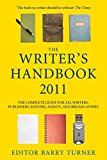Following on from How to get started in feature writing The Crafty Writer would like to introduce you to the basics of writing for magazines and newspaper supplements. In the previous article I stressed that you should get yourself some training then work on building up a small portfolio of work by doing freebies for charities or student publications. Once you’ve done that, you can approach an editor and hopefully get your first paying commission.
Who takes freelance features?
There are thousands of magazines looking for writers to fill their pages. However, many of them have ‘in-house’ writers and don’t buy in any material from outside and others use additional ‘syndicated’ material which is bought from agencies – most of your top glossy women’s mags fall into this category. What you’re looking for is a magazine that says it takes submissions or unsolicited material. This information can usually be found in the legal small print at the front of the magazine. Other clues are varied names in the contributors’ list – if John Smith has written five out of six articles for the magazine then John Smith is likely to be an in-house writer.
Market Guides
 Market guides are also a useful way of finding out who takes what. In the UK, check out either The Writers’ and Artists’ Yearbook or The Writer’s Handbook. Commonwealth and foreign English markets are also covered. In North America the industry bible is Writer’s Market. In addition there is a Christian Writers’ Market Guide. The doorstopping Benn’s Media Directory (Macmillan) is available at most reference libraries. Writing magazines including Writers’ News and Freelance Market News in the UK and Writers Market and The Writer’s Life in the USA have market listings with a review of who is currently taking freelance work.
Market guides are also a useful way of finding out who takes what. In the UK, check out either The Writers’ and Artists’ Yearbook or The Writer’s Handbook. Commonwealth and foreign English markets are also covered. In North America the industry bible is Writer’s Market. In addition there is a Christian Writers’ Market Guide. The doorstopping Benn’s Media Directory (Macmillan) is available at most reference libraries. Writing magazines including Writers’ News and Freelance Market News in the UK and Writers Market and The Writer’s Life in the USA have market listings with a review of who is currently taking freelance work.
Commercial vs industry publications
A commercial magazine is one that can generally be found on the shelves of a newsagent, stationer’s or bookshop. They compete with other titles in the same niche and are bought by people off the street. For example, ‘Cosmopolitan’ and ‘Sports Illustrated’. Industry publications, for example ‘Nursing Times’, are produced for people who work within the industry and are distributed through the workplace. Don’t be confused by ‘specialist’ magazines such as ‘Shipping’ and ‘The Angler’. While they look at a specialist industry, interest or pass time, they are still commercial and hope to attract general readers interested in their particular subject matter and are sold in shops.
Commercial magazines are the best place to start for general feature writers. However, if you have specialist knowledge of an industry, you may be well placed to approach in-house industry publications. I once had a student who used to work for the Northumbria Police human resources department. Now retired, he wanted to get into feature writing. I suggested he start out by doing a few articles for the police industry newspaper. With his credentials his work was soon snapped up. He also had an interest in military history. I suggested he research and write an article for a commercial history magazine – he did so and was published.
The Bottom Line
Writing courses often advertise that you can earn up to £30,000 a year doing feature writing. While that’s certainly possible for top-notch writers, most people will earn far less than that. To put things in perspective, you can earn anything from £30 to £1000 for one article. The average though is between £100 – £300. Let’s be generous and say £300. In order to earn a living wage of £1000 a month, you will need to do three to four articles a month. Most feature writers consider themselves lucky if they get commissioned to do one or two a month. So the bottom line is: don’t give up your day job yet. If you’re serious about a freelance writing career, you will need to supplement your income at least until you get on your feet.
In the next article, ‘The Basics of Feature Writing 2’ I will look at how to decide what to write about and how to put a proposal together.
No related posts.

Pingback: How to get started in feature writing at The Crafty Writer
Pingback: Non-fiction travel writing at The Crafty Writer
Pingback: Getting started with non-fiction writing at The Crafty Writer